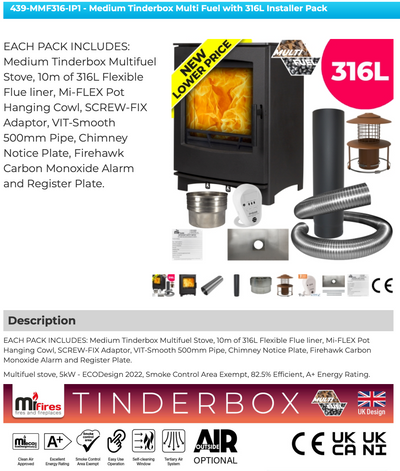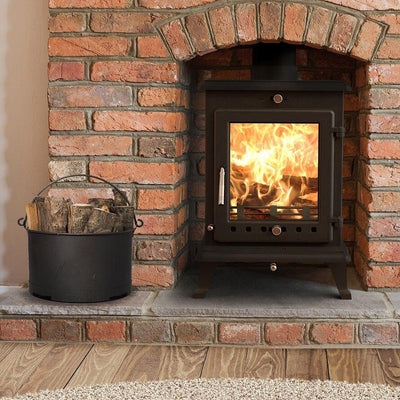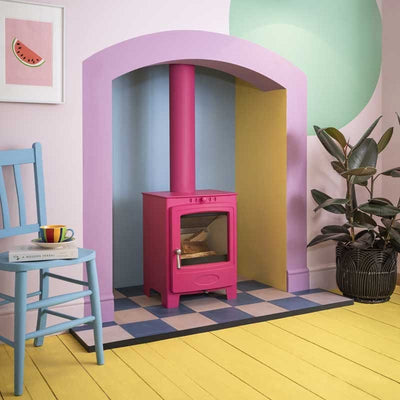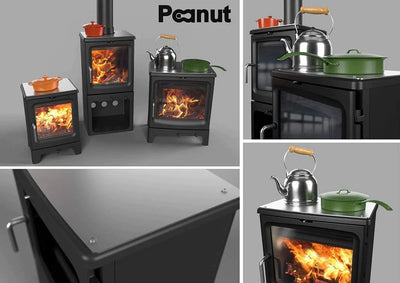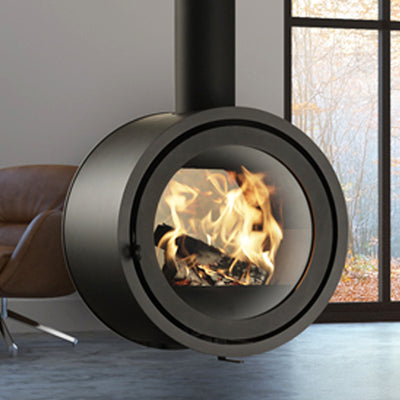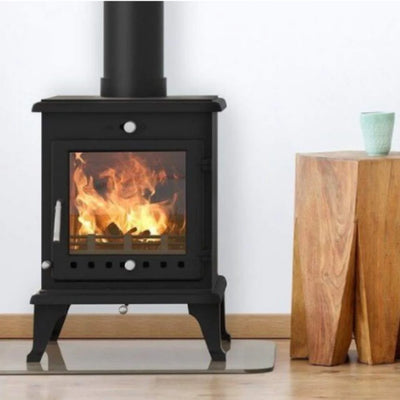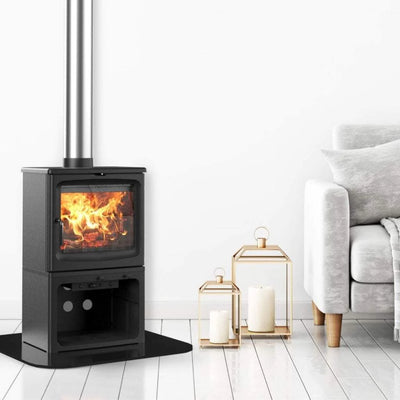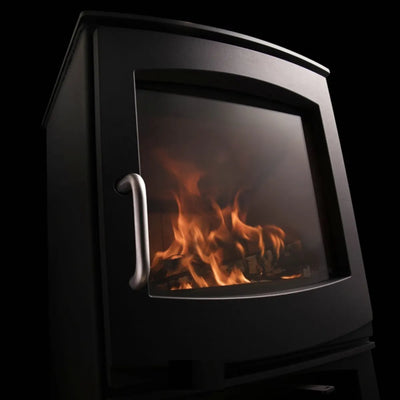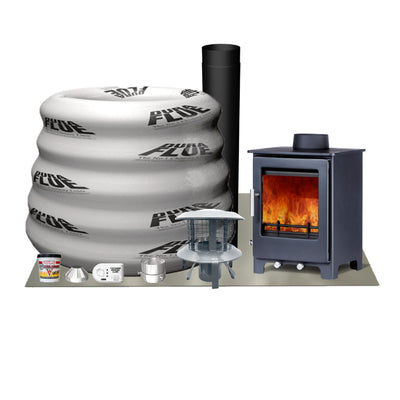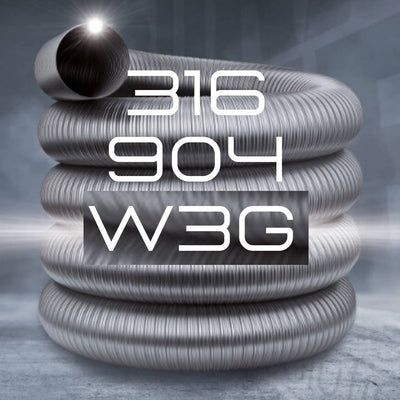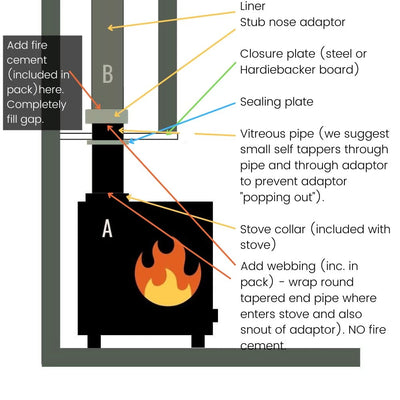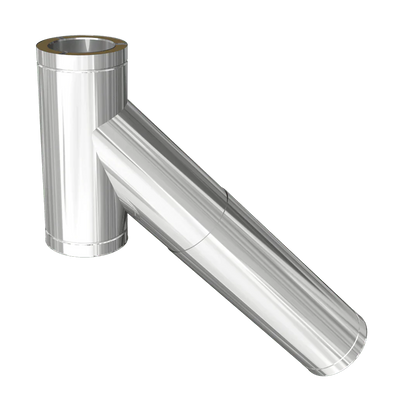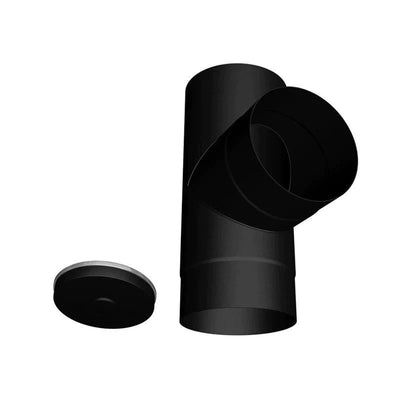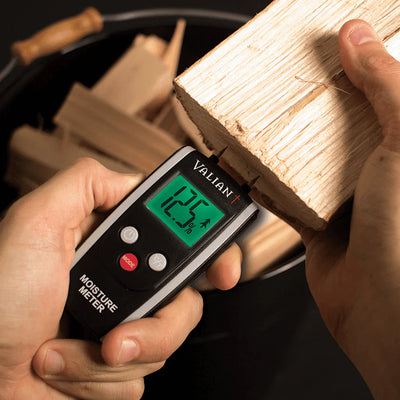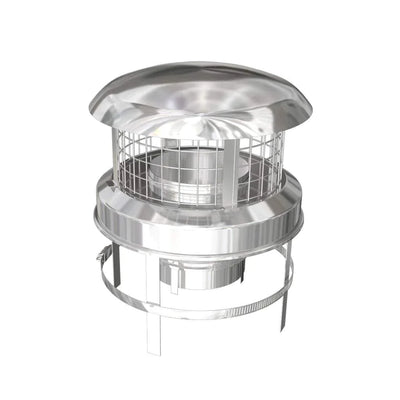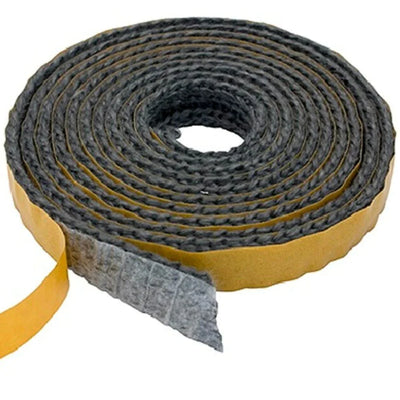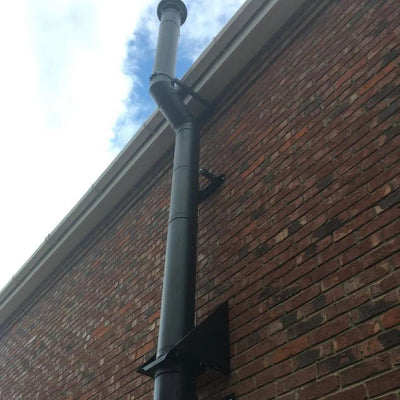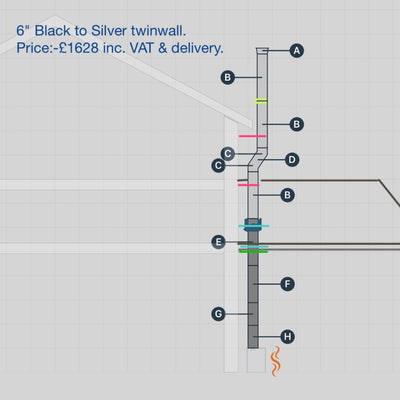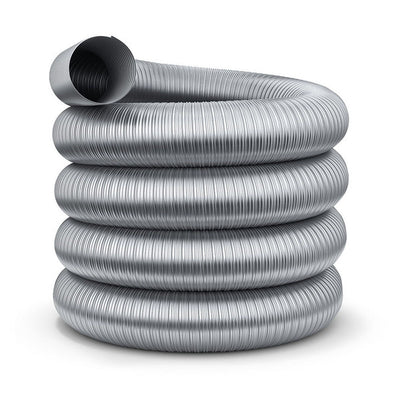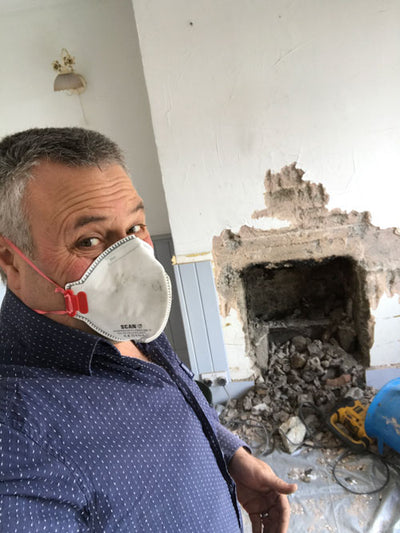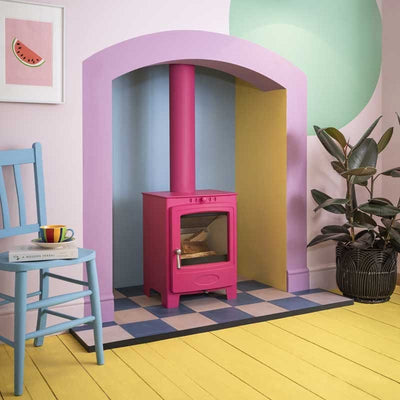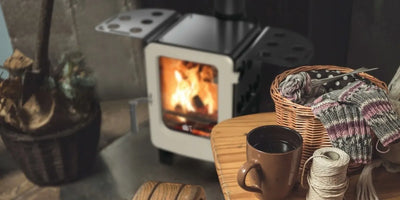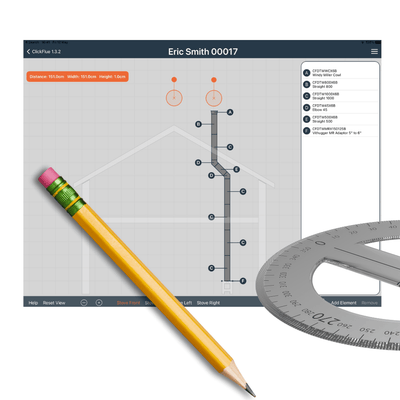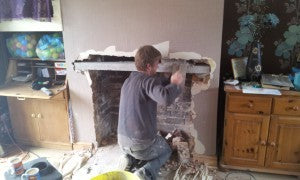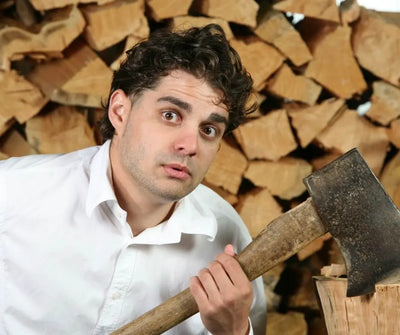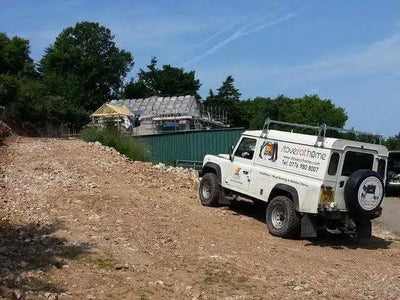Clearview Stoves Reviewed and Compared
5 mins
Clearview Stoves reviewed and compared
Clearview Stoves, Ludlow
Are you thinking of buying a Clearview stove? Is this brand the best of the best?
There are certain brands that people migrate toward when money is abundant. “What’s the best?”, they ask. “What do all the other wealthy people have?” Not necessarily a bad strategy – saves research time and there has to be a good reason all the posh people have them? I bought a pair of posh wellies and they leaked within the year – turns out production moved to China - so blindly following the pack does not always work.
Clearview stoves are based in Ludlow in the UK and is that “premier” brand in the stove world and the Clearview Pioneer 400 is their flagship stove. Step into the stereotypical, affluent home and you will likely find Aga and Clearview mixing it with Land Rover, aforementioned Hunter wellies and Farrow and Ball.
I have fitted a few Clearview Pioneer 400 stoves, three for the same customer (obviously a fan and, yes, we had the same wellies) and if I fitted down South I might have fitted a few more.

The Pioneer 400 is indeed a good solid stove; heavy, well-made and British: buy a Clearview stove and you’ll likely have many years of use and be very happy with it.
So what’s not to like? Well I am a little disappointed that the Clearview range (at the time of writing April 2017) has stayed pretty much the same for many years, no new models, no new innovations. The Clearview Pioneer 400 is the same as it ever was.
At the same time the stove market has moved on, firebox sizes have increased, viewing windows have increased in size (widescreen proportions on some models) and there have been some gorgeous and often understated aesthetics. The more “traditional” (old fashioned?) models are gathering dust at the rear of showrooms.

On their website Clearview of Ludlow give some good reasons to buy a Clearview stove:
- “Super efficient at over 70% efficient”: Times are moving fast: the DG Ivar 5 is 82%, Burley Debdale 89.8%
- “A Clearview stove can be used in smokeless zones”: As can many of the competitors
- “Exceptionally large windows”: Hmmm… A replacement Pioneer 400 glass is 28cm by 26cm and I would say that this is on the small side in today’s market. The DG Ivar 5 glass is 34cm by 33cm. The Saltfire Peanut Bignut 5 glass is 37cm x 30cm.
- “hot air wash system”: All modern stoves have air wash nowadays. Clearview got in early and built a reputation on the glass staying clean but their competitors are all running clear glass nowadays.
Anyway, I think you are catching my drift. The Clearview Pioneer 400 is a fine stove, solid, well built and, should one appreciated the more traditional styling, desirable. It is also very expensive. But if you want the Clearview badge then you are going to have to pay for it.
Here is somebody else with similar views:
“…is an excellent alternative to a clearview stove and having used one – won’t be going back to clearview. If you are a clearview convert but need something more modern then this is the stove for you. It would seem sensible for clearview to produce a more modern range using their stove technology to avoid losing sales to their competition.”
- Full article here
Other stoves, besides Clearview, that you may like to consider
View allI consider DG Stoves to be the finest stoves on the market today.
- Julian Patrick, site owner and author Stovefitter's Manual
Stovefitter's best product awards
View allA customer's comparison: villager, clearview pioneer and DG Ivar 5
We purchased our Ivar 5 for my mother-in-law as an eightieth birthday present from the family. We are all thoroughly delighted with it! It replaced an old 1980's Villager stove that was either smoldering away (caused a chimney fire a few years back) or full burn, with little control in between and constantly smoked up glass. The DG Ivar 5 is a complete contrast - unbelievable control with its single slide lever, superb clear fire picture and banging out maximum heat on minimal fuel. We chose the Ivar 5 after researching updated alternatives to the Clearview Pioneer. I have a Pioneer that has done grand service for the last 10 years - but the Ivar 5 is a slightly different beast. To compare our experience of the Clearview Pioneer directly with the DG Ivar 5
- They are of equal build quality.
- The Pioneer is likely to need firebricks replaced less often as it has a multifuel grate (Ivar 5 has lightweight firebrick base) and steel baffle plate (Ivar 5 has fire board baffle) -
These differences leads to different fire and heat characteristics.
- The Pioneer is easier to light.
- But once alight the Ivar 5 undoubtedly has superior flame picture.
- The Ivar 5 puts out a significantly larger percentage of it's heat to it's front - great for sitting in front of, but hotter opening that big door for refueling.
- The Pioneer has more balanced heat all around and higher a percentage of it's heat on top - ideal for cooking & kettles. This is due to the Pioneer's double glazed front glass reducing front heat and steel baffle transferring top heat.
My mother-in-law's new Ivar 5 is in an old chimney recess, in a sitting room - an ideal situation given the Ivar's superior flame view and front heat characteristics.
Our Pioneer is free standing in a working country kitchen - again an ideal situation given the Pioneer's top heat and more rugged characteristics.
Our conclusion is that the Ivar 5 is a top quality stove at a competitive price.
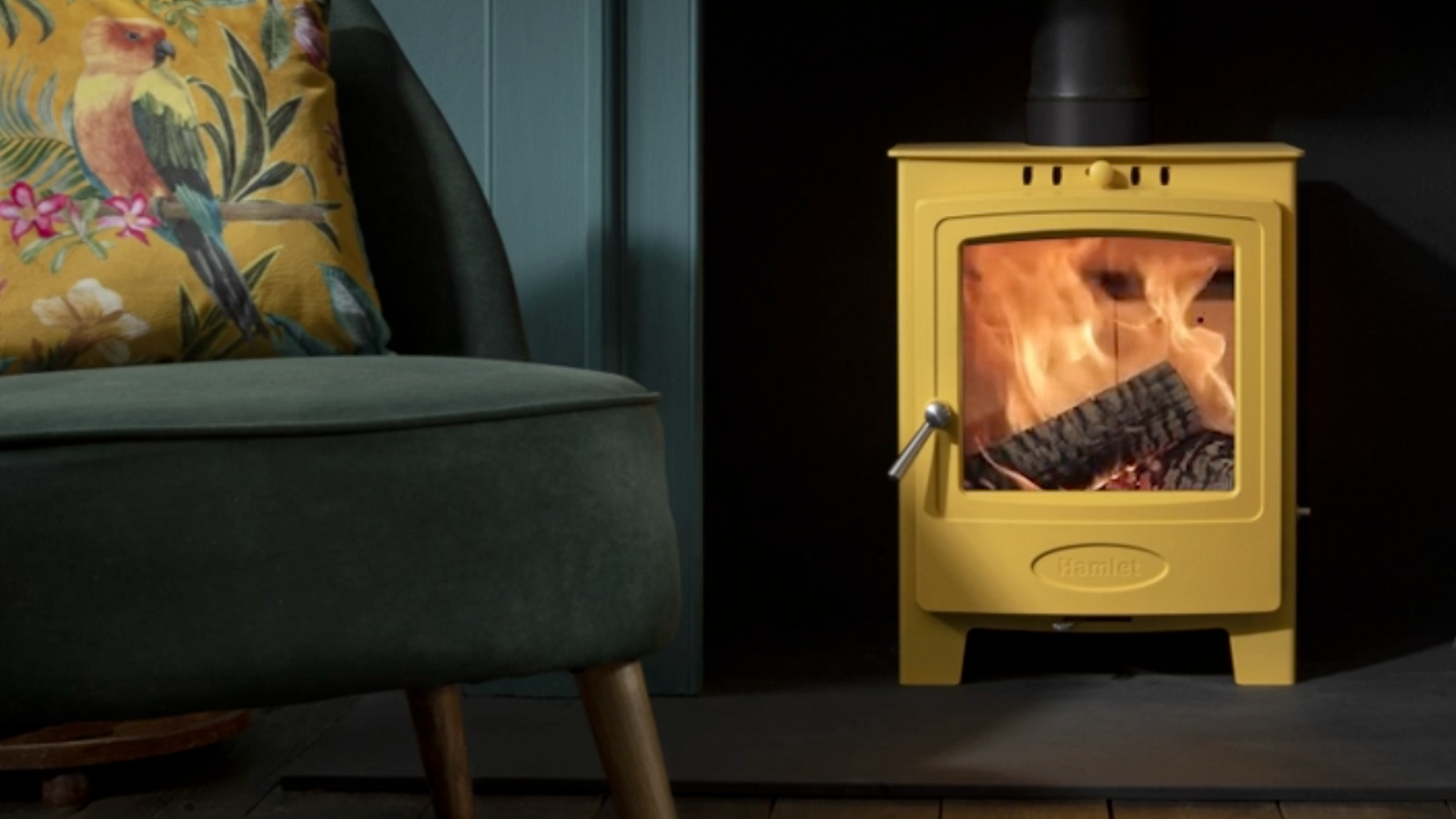
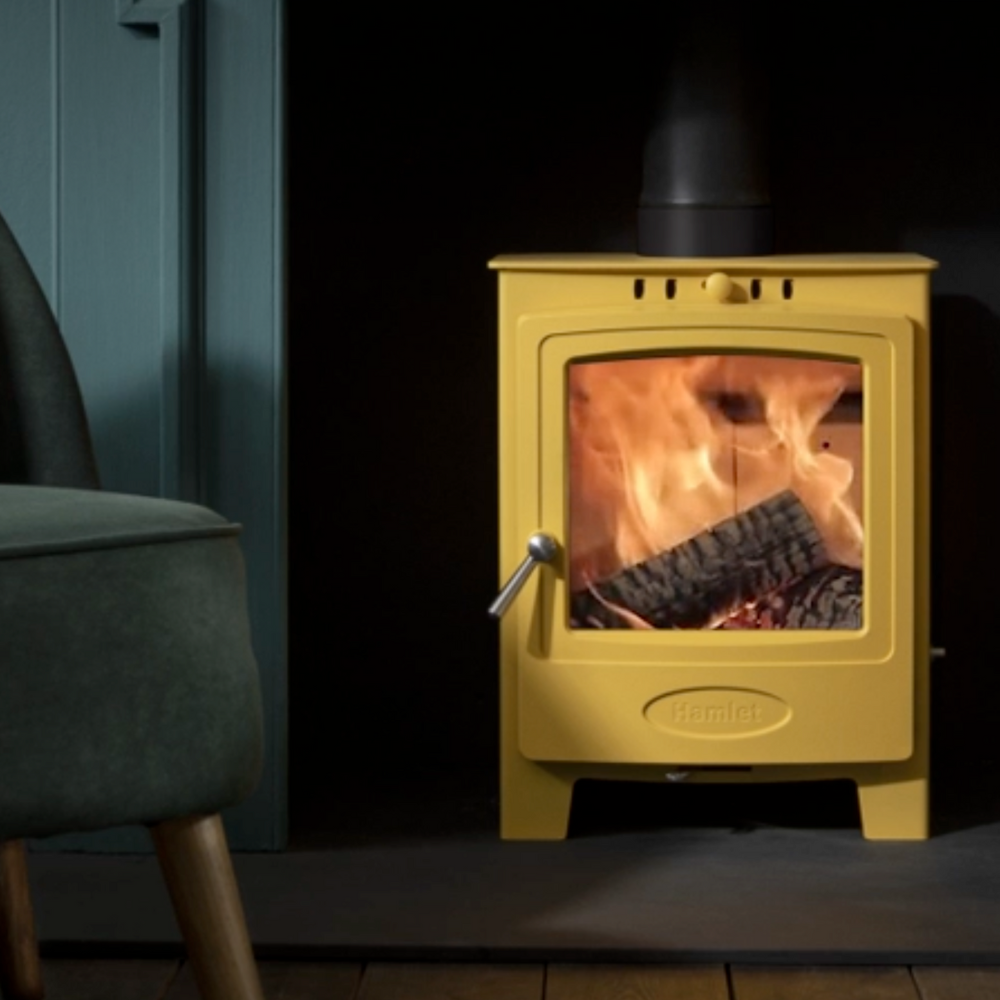
Installing a twin wall chimney - what do I need?


Installing a stove in a fireplace - what do I need?
FAQs
See all FAQsCosts correct as of April 2023:
Approx. costs if you have a chimney and fireplace ready to use: £750-£1,000 (save £500 by self-installing).
Approx. costs if you have a chimney but need the fireplace "opening up": £1,600-£2,200 (save £1200 by self-installing).
Approx. costs if you do not have a chimney and need a clip-together flue: Shed £475-£700. Bungalow £1500. 2-storey house £2500. Save £1,000-£1400 by self-installing.
Above figures include labour and materials but no appliance.
We, of course, advise you to purchase your stove and materials from Stovefitter's to ensure quality goods are installed (some installers use budget materials to increase margin). If you buy your stove from us (rather than your local small shop or installer) we have a lot more power when approaching manufacturer's with a warranty issue. Why is that? Because we buy many hundreds of stoves a year from these brands.
We do not fit stoves.
But we know a few who do!
Google: Hetas installers
Hetas are the trade body of registered UK installers.
Most installations will require that you slide a chimney liner down your chimney (flexible metal tube 5" or 6" in diameter). Do you have a narrow chimney and want to lessen the risk that a liner might not go down your chimney? Then make sure your chosen stove can use a 5" liner.
Must I line my chimney? Best read this article but most likely the answer is yes. Do I have to fit a chimney liner?
DEFRA-Exempt wood burning stoves with a 5″ collar can usually be fitted to a five inch liner rather than the usual 6″ minimum, making the installer's job much less stressful.
ALL OF THE 5KW STOVES WE SELL CAN BE FITTED TO A 5" CHIMNEY LINER.
I seriously suggest any self installer fits a 5" liner unless they know their chimney is large enough for a 6"!
What is the best chimney liner? Silvacore 904 (we sell it so of course we will say that ;-). What is the best chimney liner?
Useful links
Will your stove require an air vent within the room (some stone walls are very difficult to drill)?
5kW or under and wood burning stoves often do not require an air vent (new builds always require an air vent).
Useful links
What is the maximum output in kW of your "5kW" wood burning stove? The majority of manufacturers just specify the “nominal output” and this figure means very little in real life. The nominal is a figure the manufacturer chooses to sell the stove at - the stove is capable of reaching at least this output with one fuel load. Nominal means "capable of". But it is not the maximum.
Check out the size of the area where the logs will go (firebox size) as this varies enormously. The kW output is completely dependant on the amount of logs burning at any one time - more logs burning equals more heat. If you can fit three logs in stove A and just two logs in stove B then stove A will be capable of throwing out 33% more heat.
DO NOT TRUST MANUFACTURERS’ kW RATINGS as manufacturers specify what output they desire to sell the stove at and testing allows for much “playing with the figures”. This is why you can get very small 5kW stoves (e.g. Aga Little Wenlock) and very large 5kW stoves (e.g. DG Ivar 5 by Dik Geurts which is actually rated 5kW but has a MUCH larger firebox than the Ekol Crystal 5 by Ekol Stoves). A Crystal 5k might get to 5kW and not be capable of any higher whilst a DG Ivar, despite being rated at 5kW, can get to 8kW with a full fuel load.
Note that, over time, one might damage the internal firebricks of a stove by running at a higher load than the manufacturer's suggest. Firebricks are easily replaceable.
Useful links
Will your wood burning stove fit in your recess WITH the required air gaps around it? This is obviously not an issue if your stove will be freestanding.
Air gaps to non-combustible materials (brick, stone etc.) are usually "as close as you like" legally but manufacturers will sometimes specify a recommendation. This recommendation is there to allow heat to escape from the recess into the room - so you get the heat benefit rather than the heat soaking into the building structure and being lost. If no gap to non-combustibles recommended then we suggest 50-100mm air gap left and right of stove, 50mm behind and 100mm above.
Are you in a Smoke Control Area (usually built up areas)?
Choose your stove accordingly.
A stove must be DEFRA-Approved if you wish to burn wood in a smoke control area.
ALL OF THE STOVES WE SELL ARE DEFRA APPROVED FOR SMOKE CONTROL AREAS.
In simple terms if a stove has an efficiency rating of 70% then 30% of the heat from your logs goes up the chimney.
If a stove has an efficiency rating of 90% then only 10% goes up the chimney.
So think of this in terms of how many logs you have to chop/buy.
Example: A Saltfire Peanut 5 by Saltfire Stoves in Dorset has an efficiciency of 80%.
A tall chimney (6m or more) that is lined will be happy with an efficient stove.
Efficiency importance can be said to be overrated and anything between 75% and 85% is fine. Go much higher and performance can actually suffer (smoke in room when opening door to reload, blackening of glass).
Many modern stoves can go on 12mm thick hearths. Others require full, 5″ thick constructional hearths. All of the stoves we sell state whether or not a 12mm hearth is suitable.More about hearths for wood stoves here.
Helpful links
Can you can talk to somebody on the phone should you need to after the wood burning stove has been delivered, especially if you are self installing? Will the staff at “wesellzillionsofstoves.com” be able to assist with any installation issues? What if there are any problems after install?
Do yourself a favour before ordering stoves or materials on the Internet: Go to Trustpilot and type in the company name before you buy. Some companies advertising at the top of search engines are not good news - check for yourself.
When striving to find thebest 5kW wood burning stovesyou will likely be bewildered by the choice. There are many to choose from. The question I get asked most in our shop is “why should I pay <£1,000> for this one when this other one is just <£500>?”. Here is the very simple answer:the cheaper wood stoves are made in Chinaor Eastern Europe whilst the more expensive are made in Western Europe (or sometimes the USA). Here are a few examples where a more expensive stove might excel over a cheaper stove:
- Aesthetics (more time spent on design)
- Hinges (sometimes hidden on more expensive stoves)
- Better quality glass
- Thicker steel (longer life)
- Improved door locking mechanisms
- Longer warranty
- Improved controllabilty of flame due to more resource invested on design of air flow within stove
- Brushed steel fittings instead of cheapy chrome look
Open and close the door on a cheap Chinese stove. Then open and close the door on a DG stove, Arada stoves, Woodford stoves, Hamlet stoves or Saltfire stoves. You’ll understand the difference.
Stove pricing reminds me of wine pricing. A £20 bottle of wine is not double the quality of a £10 bottle of wine (the drinking experience might be improved by 20% as an example). We are talking “the law of diminishing returns here. They are all “fire in a metal box” at the end of the day.
Yes. However, there are specific regulations and restrictions in place to address air pollution concerns, particularly in areas designated as Smoke Control Areas. In these areas, only approved "smokeless" fuels or exempt appliances, such as Defra-approved wood-burning stoves, can be used. These stoves are designed to burn wood more efficiently and produce fewer emissions.
All the stoves we sell are DEFRA approved and Eco-design approved and suitable for all areas of the UK.
Terminology
View all TerminologyA stainless steel tube, slides down a brick/stone chimney to provide a smooth and safe route for smoke.
All of our stoves are approved by DEFRA to burn wood in all UK locations including Smoke Control Areas (towns and cities). Not all stoves are, so be careful if buying elsewhere.
All of our stoves are ECODESIGN approved to be sold in the UK. Not all stoves are, so be careful if buying elsewhere. ECODESIGN is mandatory by law since January 2022.
The base your stove sits on.
If the chimney is the polo mint then the flue is the hole.
Buying guides
The Stovefitter's Manual

How to choose a wood burning stove for your property (includes infographic)
Infographics

What size wood stove do I need? Don't let manufacturers fool you!
Buying Guides
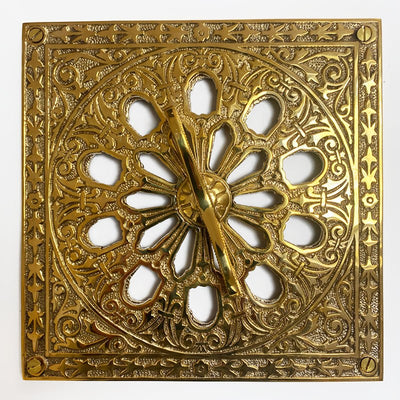
Do I need an air vent for a wood burning stove? If I do not bother?
Buying & DIY

Knowledge Tree: Process of buying and installing a wood burning stove
Buying & DIY
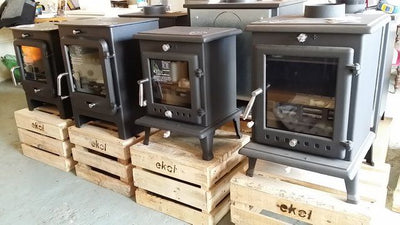
Chinese wood burners – should I buy one or are they all crap?
Buying Guides

What else do I need to buy to install a wood burning stove?
DIY Guides

Infographics for wood burning stove purchase and install
Infographics
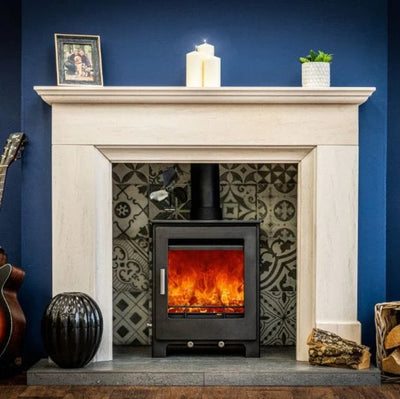
Wood burning or multifuel stove? A stove fitter decides.
Buying Guides
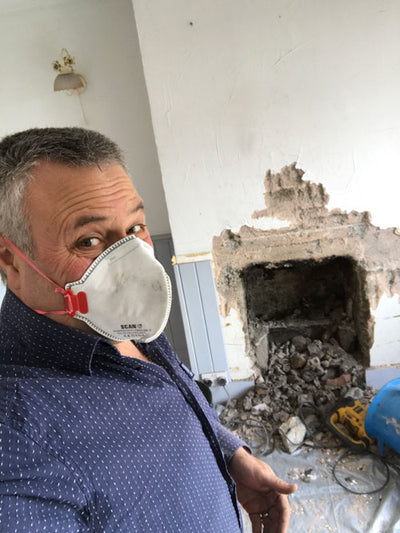
A few words from Julian
Buying & DIY
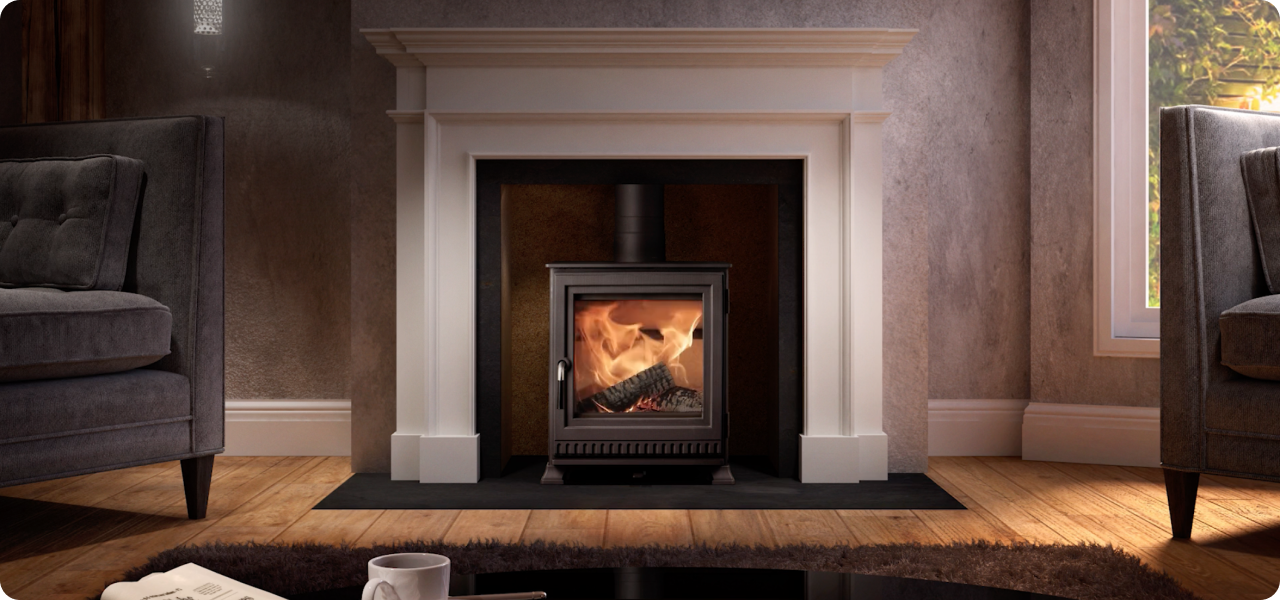
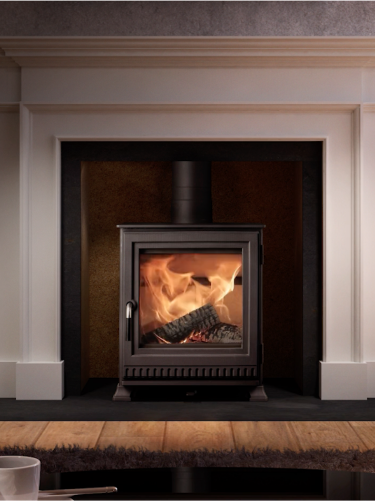
Find my perfect stove
Answer 3 simple questions and we will show you the best Stoves for your space.


